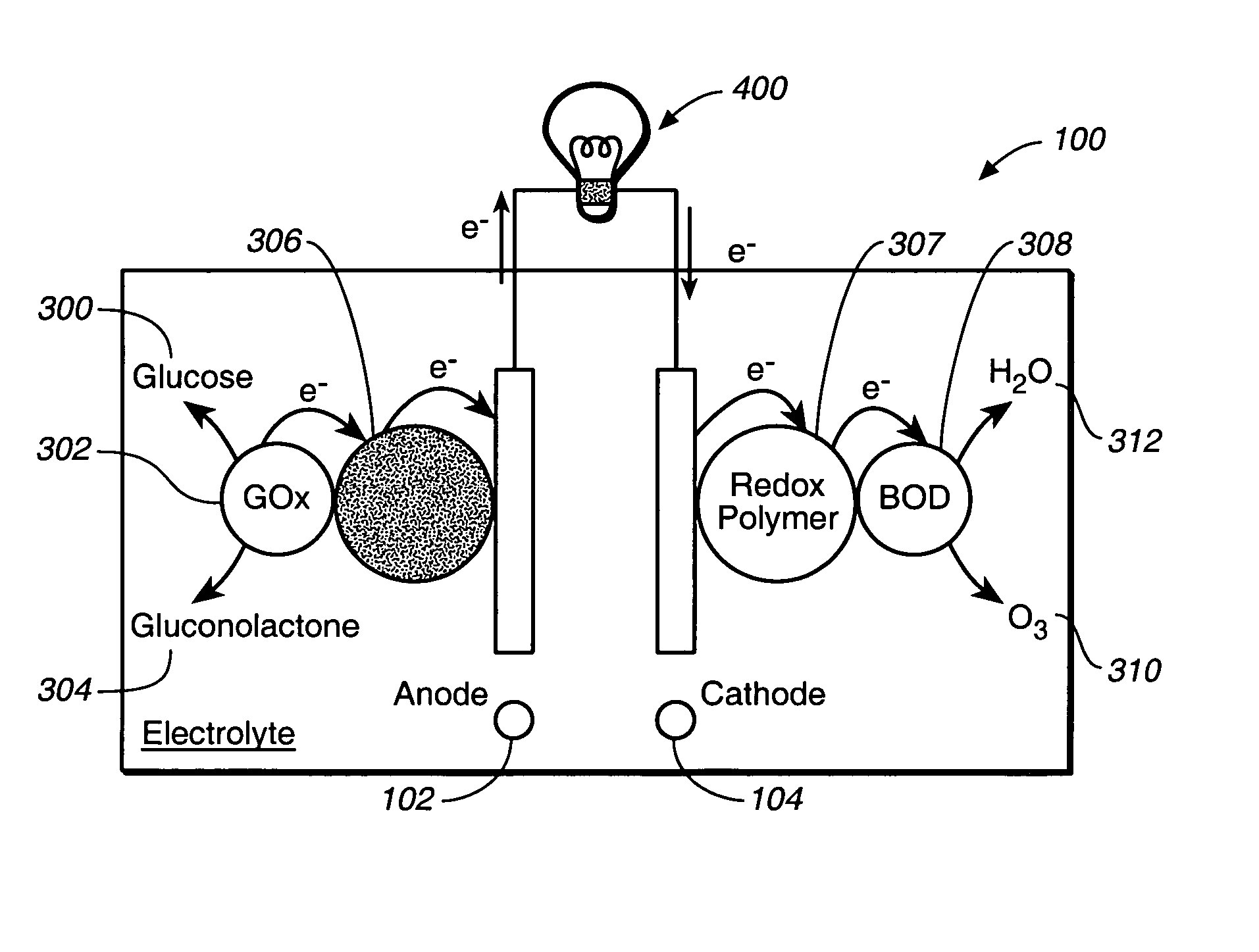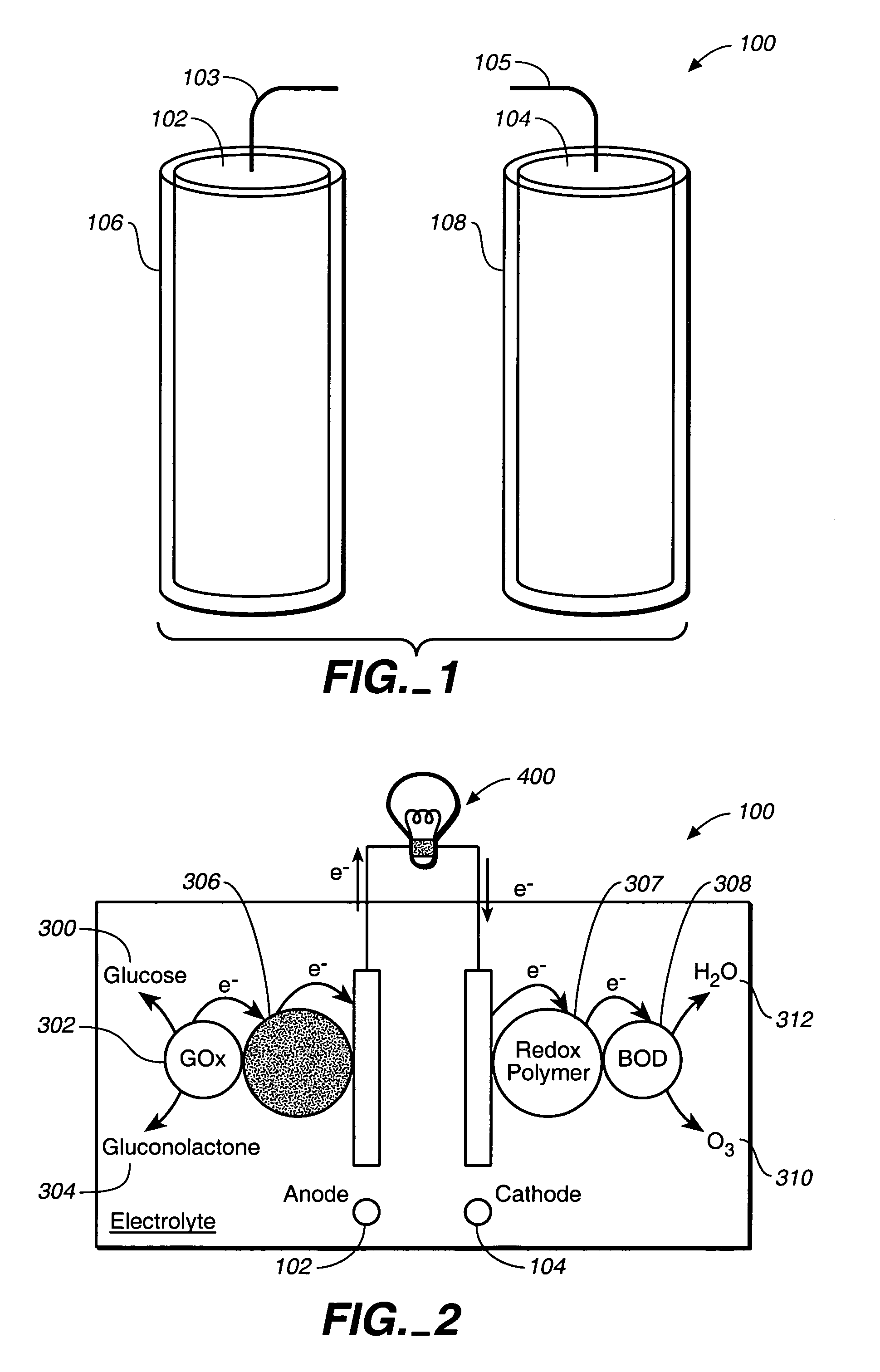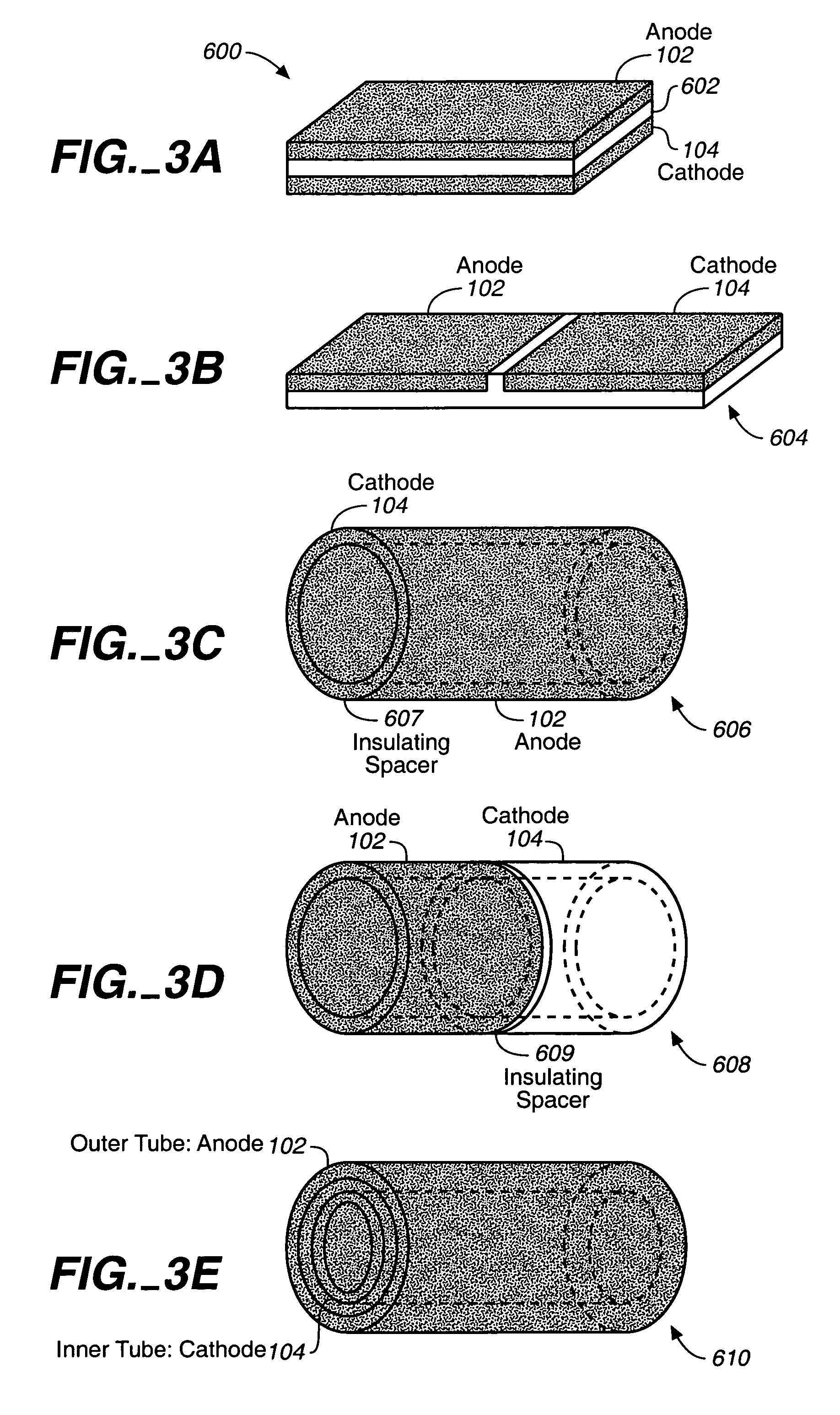Miniature biological fuel cell that is operational under physiological conditions, and associated devices and methods
a fuel cell and biological technology, applied in the field of microorganism fuel cells, can solve the problems of poor catalyst for oxygen reduction of anode electrocatalysts and poor catalysts for oxidation of fuel of cells, and achieve the effect of reducing physical dimensions and cell dimensions
- Summary
- Abstract
- Description
- Claims
- Application Information
AI Technical Summary
Benefits of technology
Problems solved by technology
Method used
Image
Examples
experimental examples
[0123]The following examples are provided to demonstrate biological fuel cells 100, and particular cathodes 104, that were experimentally produced in accordance with embodiments of the invention. Experimental Example 1 is reported in Mano et al., An Oxygen Cathode Operating in a Physiological Solution, J. Am. Chem. Soc. 2002, 124, 6480-6486, and Experimental Example 2 is reported in Mano et al., On the Relationship between the Characteristics of Bilirubin Oxidases and O2 Cathodes Based on Their “Wiring”, J. Phys. Chem. B 2002, 106, 8842-8848. The following examples include the chemicals and materials used in the experiment, the techniques used to assemble the electrodes, the results of the experiments, as well as discussions of the results. It should be noted that these experiments are provided herein mainly for illustrative purposes, and should not be construed as placing limitations on the invention.
experimental example 1
M v.-BOD On The Cathode
[0124]Chemicals and Materials: Bilirubin oxidase (EC 1.3.3.5) from M Verrucaria, catalase from bovine liver (EC 1.11.1.6), uric acid (sodium salt), spermine (hydrochloride salt), neomycin, gentamycin, 1,4,8,11-tetraazacyclotetradecane (cyclam), L-sodium ascorbate, 4-acetaminophen, NaIO4, NaCl, NaOH, KCNS, KBr, MgCl2, CaCl2, and NaF were purchased from Sigma (St. Louis, Mo.). Poly(ethylene glycol) (400) diglycidyl ether (PEGDGE) was purchased from Polysciences Inc. (Warrington, Pa.). A fresh solution of BOD in pH 7.4 20 mM phosphate buffer (PB) was prepared daily. The uric acid was dissolved in dilute NaOH and then neutralized with dilute H3PO4 to yield a 10 mM aqueous solution (Binyamin, G., Chen, T., Heller, A., J. Electroanal. Chem. 2001, 500, 604-611). The electrochemical measurements were performed in phosphate buffered saline (PBS) (pH 7.4 20 mM phosphate-buffered 0.15 M NaCl) except in the experiments where the pH and anion dependence of the steady-state...
experimental example 2
T t.-BOD On The Cathode
[0154]Chemicals and Materials: BOD (EC 1.3.3.5, 1.3 U / mg1) from Trachyderma tsunodae was a gift from Amano, Lombard, Ill. NaCl, NaOH, KCNS, KBr, MgCl2, CaCl2, and NaF were purchased from Sigma, St. Louis, Mo. Poly(ethylene glycol) (400) diglycidyl ether (PEGDGE) was purchased from Polysciences Inc. (Warrington, Pa.). A fresh solution of BOD in pH 7.4 20 mM phosphate buffer (PB) was prepared daily. The uric acid was dissolved in dilute NaOH then neutralized with dilute H3PO4 to yield a 10 mM aqueous solution (Collman, J. P., Fu, L., Herrmann, P. C., Wang, Z., Rapta, M., Broring, M., Schwenninger, R., Boitrel, B., Angew. Chem. Int. Ed. Engl. 1998, 1998, 3397-3400). The electrochemical measurements were performed in pH 7.4 phosphate buffered saline (PBS, 20 mM phosphate, 0.15 M NaCl) except in the experiments where the pH and anion dependences of the steady-state, O2 electroreduction currents were determined. In these, borate, citrate, acetate, phosphate and Tris...
PUM
| Property | Measurement | Unit |
|---|---|---|
| temperature | aaaaa | aaaaa |
| length | aaaaa | aaaaa |
| current densities | aaaaa | aaaaa |
Abstract
Description
Claims
Application Information
 Login to View More
Login to View More - R&D
- Intellectual Property
- Life Sciences
- Materials
- Tech Scout
- Unparalleled Data Quality
- Higher Quality Content
- 60% Fewer Hallucinations
Browse by: Latest US Patents, China's latest patents, Technical Efficacy Thesaurus, Application Domain, Technology Topic, Popular Technical Reports.
© 2025 PatSnap. All rights reserved.Legal|Privacy policy|Modern Slavery Act Transparency Statement|Sitemap|About US| Contact US: help@patsnap.com



